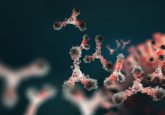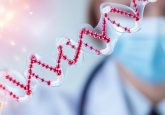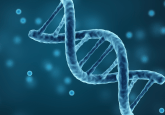Finding a needle in a haystack: aptamer screening using hydrogels

Researchers from Penn State University (PA, USA) have created a hydrogel for selecting high-affinity aptamers, eliminating the need for multiple cycles of aptamer screening currently necessary with traditional methods. The team published their findings in Nature Biotechnology.
Aptamers – short, single-strands of DNA or RNA – are used in biomedicine in a similar way monoclonal antibodies are used to selectively bind and recognize their respective targets and are often even referred to as ‘chemical antibodies’. Aptamers can be used to target proteins, peptides, carbohydrates and small molecules and are becoming popular tools due to their low complexity and immunogenicity, and high affinity and specificity. However, finding the perfect aptamer for a target molecule requires extensive examination of aptamer candidate pools, a process that can stretch on for months and often yields no suitable match.
Penn State researchers have developed a new method for selecting aptamers using a hydrogel – a polymer network that holds its shape and expands when taking on large quantities of water. High-affinity or ‘well-fitting’ aptamers are retained by the hydrogel, whilst ‘non-match’ candidates leave the gel within 60 hours. Corresponding author and Professor of Biomedical Engineering Yong Wang, explained:
“The procedure of finding aptamers is frustrating to not only beginners but also experienced researchers — like finding a needle in a haystack. Many researchers are interested in using aptamers for their projects, but as it is very difficult to get them, they cannot test their ideas or explore novel applications. Aptamers can be used as therapeutics by themselves, they can be conjugated with drugs or nanoparticles to guide delivery and improve efficacy, they can be applied to functionalize a detection kit for examining whether a blood sample contains viruses or cancer biomarkers. Basically, aptamers can be applied anywhere antibodies are designed.”
The team’s PEG hydrogel used immobilized target molecules from the protein thrombin, which functions as both a procoagulant and anticoagulant. An aptamer library was injected into the hydrogel and the high-affinity candidates bonded to the static targets, whilst the low-affinity candidates diffused freely through the hydrogel’s pores. This method differs from the traditional aptamer selection method, whereby target molecules and the aptamer library are mixed in a solution before being filtered through a thin membrane. As the filtration step is usually repeated several times, some high-affinity candidates are lost.
You may also be interested in:
- Antibody alternatives for analyzing biomarkers in blood samples
- Saved by the gel: spider silk hydrogels as therapeutic delivery agents
- Neuropsychological lupus biomarkers for diagnosis
“Unfortunately, molecular binding is a physical interaction, and during the filtration step, specific candidates can fall apart from target molecules, go through the membrane and get lost. In our method, a desired aptamer candidate will re-bind to an immobilized molecule if it falls apart from a formerly bound target molecule. Therefore, the candidate will not be easily lost during the procedure of diffusion.”
The researchers collected and analyzed the aptamer candidates remaining in the thrombin-immobilized hydrogel with next-generation sequencing technology. They prioritized 50 aptamer candidates, further categorized them and tested them for binding efficacy. The ‘anti-thrombin aptamer’ identified from the pool had a binding affinity comparable to those identified using >10 cycles of aptamer selection with traditional methods, saving researchers considerable time.
“Aptamer selection can be achieved in one single step without the need [for] a reiterative process, and all concerns with reiterative operations are avoided,” said Wang, adding that further work on the HAS method will fine-tune this approach, including selecting aptamers for non-protein target molecules or even living cells if they can be kept in the hydrogel under ambient conditions. “We hope that [hydrogel for aptamer selection] will help researchers explore various fields that require molecular binding or recognition.”






